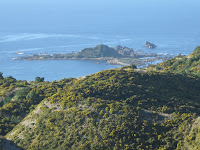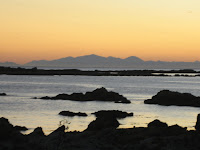
From up here you can see just how much of the city is green. This is partly due to the Geography. Wellington is built in the valleys, on the slopes and on the ridges which radiate out from the harbour. But many of the slopes are just too darn steep for easy construction.
But the greenery is also Thanks to the Founders. In the 19th Century the “City Fathers” and no doubt their respective wives (first women on the planet to get the vote, sister! So they must have done their fair share of lobbying on the sidelines) had the foresight to “zone” large areas of “Town Belt” which have been protected from “development” and reserved as open spaces for the recreation of the citizens. Many of these areas would undoubtedly be prime building land. Most wonderful of these is the Botanic Gardens – which is a world class gem, five minutes walk from the parliament building.
Also Otari-Wilton Bush, which is Wellington’s second botanical garden. To say that this is an area of native bush, just on the city’s edge, sounds unremarkable. However vast areas of forest (for that is what “bush” means in this context) around the outskirts were clear cut to provide the timber to build the city. These hillsides are now slowly regenerating. But a native hardwood tree such as the Rata takes a thousand years, or two, to reach it’s full glory. So areas such as this, so near to the city, are treasures indeed.













